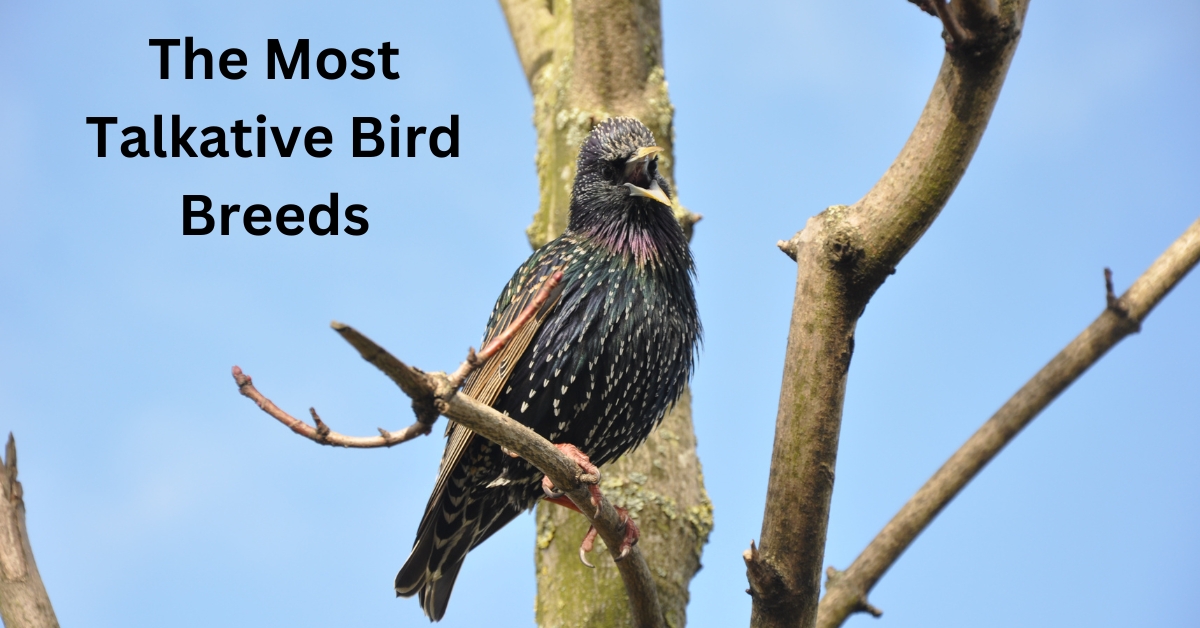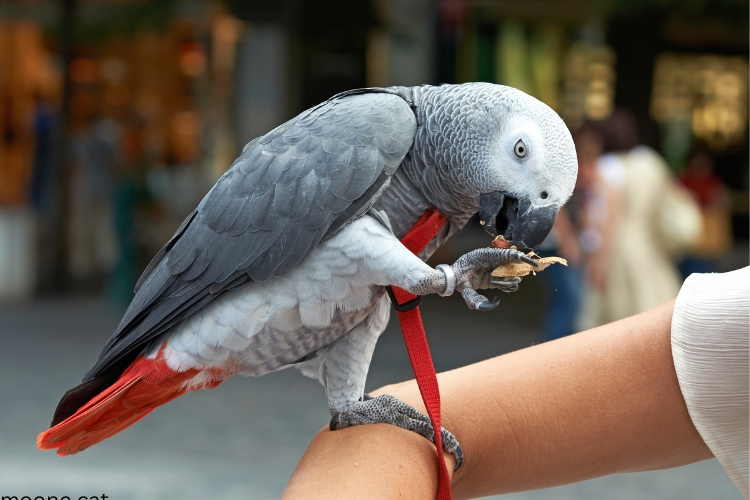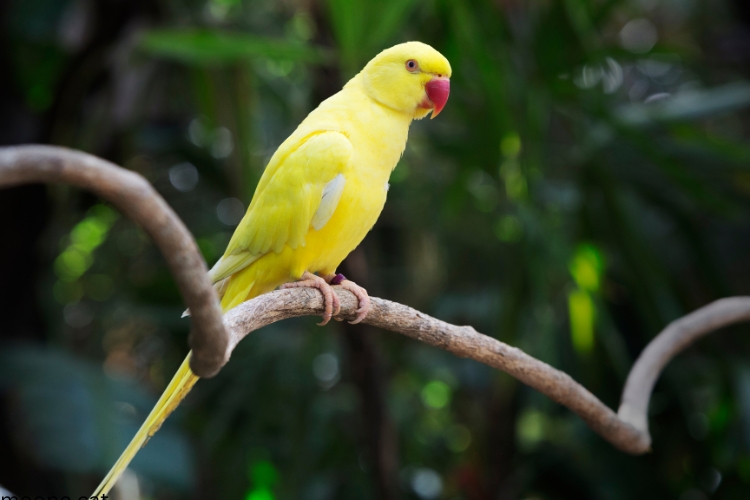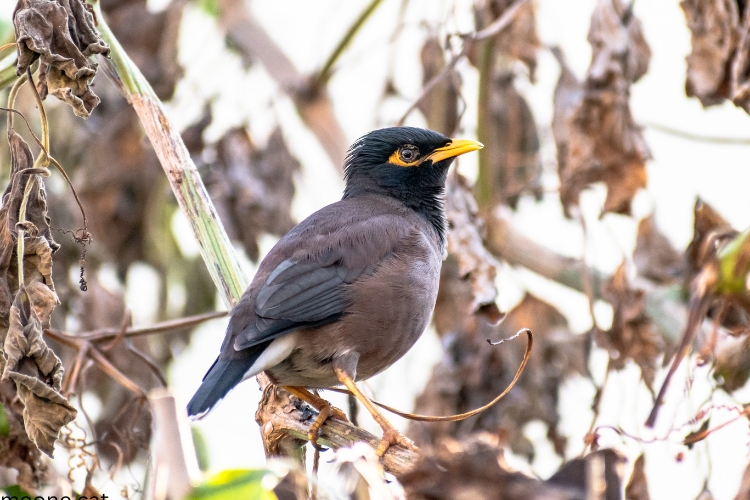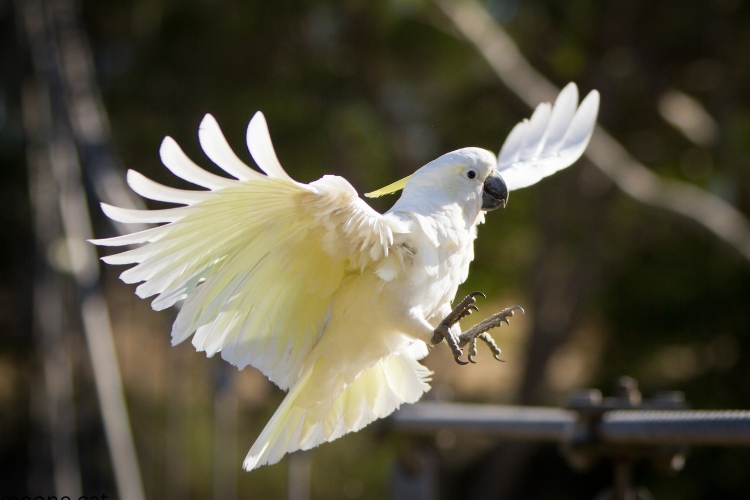Birds are known for their incredible vocal abilities, and certain species stand out as the most talkative of the bunch. But what makes a bird a “talking bird,” and why do some species exhibit more advanced vocalizations than others? Let’s explore about the fascinating world of birds communication.
The Bird Talking Process is a complex phenomenon that involves the bird’s unique vocal anatomy, cognitive capabilities, and social behaviors. Birds possess a specialized organ called the syrinx, which is often referred to as the “avian vocal cords.” This structure, located at the base of the trachea, allows birds to produce a diverse range of vocalizations, from simple chirps to intricate mimicry.
Researchers have proposed several Theories on the Functions of Talking in Birds, each shedding light on the evolutionary significance of this remarkable ability:
- Flock Recognition: Talking helps birds identify and communicate with members of their social group, facilitating cohesion and coordination within the flock.
- Territoriality: Vocal displays serve to mark and defend a bird’s territory, deterring potential rivals and maintaining boundaries.
- Sexual Selection: Elaborate vocalizations can play a crucial role in attracting mates and establishing pair bonds, as birds often assess potential partners based on their vocal prowess.
- Anti-predation: Calling out warnings to alert fellow flock members of impending danger can increase the chances of survival for the entire group.
- Auditory Mapping in Birds: Some theories suggest that talking abilities may be linked to a bird’s cognitive capacity to create and process complex auditory representations of their environment.
The Top Talkative Bird Breeds
Not all bird species are created equal when it comes to their talking abilities. Some breeds stand out as the true vocal wonders of the avian world. Let’s explore the Top Talkative Bird Breeds:
- African Grey Parrot
- Species Overview: Known for their exceptional intelligence and impressive talking skills, African Grey Parrots are considered one of the most talkative bird breeds. They have the ability to mimic a wide range of sounds, including human speech, with remarkable accuracy and clarity.
- Talking Abilities: African Greys can learn and replicate hundreds of words and phrases, often demonstrating an understanding of the context in which they are used. They are renowned for their ability to engage in conversation, asking and answering questions, and even using language in a seemingly logical manner.
- Amazon Parrot
- Species Overview: Amazon Parrots are another highly vocal group of birds, boasting a diverse repertoire of sounds and the capacity to accurately mimic human speech. These vibrant and intelligent parrots are popular as pets due to their outgoing personalities and impressive talking skills.
- Talking Abilities: Amazon Parrots are capable of learning and reproducing a vast array of words, phrases, and even entire sentences. They often develop strong bonds with their owners, leading to more personalized and contextual vocalizations.
- Indian Ringneck Parakeet
- Species Overview: The Indian Ringneck Parakeet is a smaller parrot species known for its striking appearance and vocal abilities. These birds are renowned for their ability to mimic human speech and a wide range of other sounds with remarkable accuracy.
- Talking Abilities: Indian Ringnecks can learn to repeat numerous words and short phrases, often displaying a keen understanding of the meaning and appropriate use of the vocalizations they’ve acquired.
- Cockatoo
- Species Overview: Cockatoos are a diverse family of parrots known for their playful personalities, affectionate nature, and impressive talking skills. These charismatic birds are capable of producing a wide range of vocalizations, including mimicry of human speech.
- Talking Abilities: Cockatoos can learn to mimic a variety of sounds, including words, phrases, and even simple conversations. They often develop strong bonds with their owners, leading to more personalized and contextual communication.
- Mynah Bird
- Species Overview: Mynah birds, particularly the Hill Mynah, are renowned for their exceptional talking abilities. These members of the starling family are known for their remarkable capacity to mimic human speech with exceptional clarity and nuance.
- Talking Abilities: Mynah birds can learn to replicate a vast array of words, phrases, and even short sentences. They often demonstrate an understanding of the context in which the vocalizations are used, and their talking skills can rival those of parrots.
Training and Encouraging Talking Abilities
Nurturing a bird’s talking abilities requires a combination of patience, dedication, and the right training techniques. Here are some tips for Training and Encouraging Talking Abilities:
- Establish a Positive Reinforcement Routine: Use treats, praise, and other forms of positive reinforcement to encourage and reward your bird’s vocalizations, particularly when they mimic human speech.
- Engage in Frequent Interaction: Spend time talking to your bird, repeating simple words and phrases consistently. This exposure and encouragement can help strengthen their talking skills.
- Introduce Variety: Expose your bird to a diverse range of sounds, words, and tunes to expand their vocal repertoire and enhance their overall speaking abilities.
- Consider Individual Differences: Recognize that some birds may be more inclined to talk than others, and adjust your training approach accordingly. Factors such as age, gender, and individual personality can influence a bird’s propensity for vocalization.
Talking Birds as Pets: Considerations and Benefits
Keeping a talking bird as a pet can be a rewarding and enriching experience, but it’s important to understand what makes a bird a “Talking Bird” and the various Considerations and Benefits involved.
What Makes a Bird a “Talking Bird”?
The term “talking bird” generally refers to species that demonstrate the ability to mimic human speech and other complex vocalizations. These birds possess the physical and cognitive capabilities to reproduce a wide range of sounds, often with remarkable accuracy and contextual understanding.
Benefits of Having a Talking Bird Companion
- Intellectual Stimulation: Caring for a talking bird can provide endless hours of mental stimulation and entertainment, as you engage in interactive exchanges and witness their cognitive capabilities in action.
- Companionship: Talking birds can form strong bonds with their owners, leading to a more personalized and rewarding relationship.
- Educational Value: Observing and interacting with a talking bird can be an excellent way to learn about avian behavior, communication, and the complexities of the natural world.
Important Factors to Consider Before Getting a Talking Bird
- Time and Commitment Required: Talking birds require a significant investment of time and attention to properly care for and nurture their vocal abilities.
- Noise Level and Household Dynamics: The constant vocalization of a talking bird can be disruptive to a household, particularly in close living quarters. Consider the noise tolerance of your family and neighbors.
- Lifespan and Long-term Care: Talking bird species can live for several decades, so be prepared to provide long-term care and commitment to your feathered companion.
Additional Talking Bird Breeds
While the breeds mentioned earlier are considered the top vocal wonders, there are several other bird species that exhibit impressive talking abilities. Let’s explore some Additional Talking Bird Breeds:
Parrots
- Budgerigar (Budgie): These small parrots can learn to mimic simple words and phrases, though their talking abilities may not be as advanced as larger parrot species.
- Eclectus Parrot: Known for their vibrant colors and gentle nature, Eclectus Parrots can also be trained to speak a variety of words and short phrases.
- Macaw: The larger parrot species, such as Macaws, are capable of learning and replicating human speech, though their vocalizations may be less nuanced compared to smaller parrots.
- Quaker Parrot: Also known as Monk Parakeets, these social and intelligent birds can pick up on human speech and incorporate it into their own vocalizations.
Singing Birds
- Mockingbirds: These talented songbirds are renowned for their ability to mimic a wide range of sounds, including human speech.
- Corvids: Members of the crow family, such as crows and ravens, have been observed mimicking human words and phrases.
- Starlings: The Hill Mynah, a type of starling, is particularly famous for its exceptional talking abilities.
- Hill Mynahs: These members of the starling family are renowned for their uncanny ability to mimic human speech with remarkable clarity and nuance.
Ducks
- Musk Duck: While not typically associated with talking, this unusual duck species has been documented mimicking human speech and other vocalizations.
Others
- Tūī: This unique New Zealand native bird is capable of producing a diverse range of vocalizations, including some that resemble human-like sounds.
Conclusion
The world of talking bird breeds is a fascinating realm, showcasing the incredible vocal abilities and cognitive capacities of our feathered friends. From the renowned African Grey Parrot to the impressive Mynah bird, these avian wonders have captivated bird enthusiasts and researchers alike. By understanding the underlying mechanisms of bird communication and the unique traits of the top talkative breeds, we can better appreciate the complexity and diversity of the avian world.
Whether you’re considering bringing a talking bird into your home or simply marveling at their vocal prowess, the exploration of these remarkable species is a journey that continues to inspire and enlighten us. As we continue to unravel the mysteries of bird talking, we can deepen our connection to the natural world and the remarkable creatures that inhabit it.
FAQs
1. What is the most talkative bird breed?
The African Grey Parrot is widely considered the most talkative bird breed, known for its exceptional ability to mimic human speech and engage in contextual communication.
2. Can all parrots talk?
No, not all parrot species have the same propensity for talking. While many parrot breeds, such as African Greys, Amazon Parrots, and Cockatoos, are renowned for their talking abilities, not all parrots exhibit the same level of vocal prowess.
3. How do I teach my bird to talk?
Effective training techniques for teaching a bird to talk include:
- Establishing a positive reinforcement routine
- Engaging in frequent interaction and exposure to target words/phrases
- Introducing variety and exposing the bird to a diverse range of sounds
- Recognizing individual differences and adjusting the training approach accordingly
4. How many words can a talking bird learn?
The number of words a talking bird can learn can vary significantly depending on the species, individual bird, and the amount of training and exposure. Some highly skilled talking birds, such as African Greys, have been documented learning and using hundreds of words and phrases.
5. Do male or female birds talk better?
There is no definitive evidence that one gender of birds inherently talks better than the other. Both male and female birds can exhibit exceptional talking abilities, with individual variation playing a more significant role in a bird’s vocal prowess.
6. Is it better to get a hand-fed or parent-raised bird for talking?
There are pros and cons to both hand-fed and parent-raised birds when it comes to talking abilities. Hand-fed birds may form stronger bonds with their owners, potentially leading to more personalized vocalizations, while parent-raised birds may develop a more diverse vocal repertoire. The best approach often depends on the individual bird and the owner’s training methods.
7. Can smaller bird species, like parakeets, talk well?
While smaller bird species, such as budgies (parakeets), can learn to mimic simple words and phrases, their talking abilities are generally not as advanced as larger parrot species. The physical size and vocal anatomy of the bird can play a role in their talking prowess.
8. Do talking birds understand what they’re saying?
There is ongoing debate and research regarding the extent to which talking birds comprehend the meaning of the words and phrases they mimic. While some birds may display contextual understanding, the level of their linguistic comprehension is still an area of active study and discussion among experts.
9. Can a bird learn multiple languages?
Yes, some highly skilled talking birds have demonstrated the ability to learn and use multiple languages, including both human languages and other vocalizations. The bird’s cognitive capabilities, exposure to different languages, and training methods can all contribute to their multilingual abilities.
10. How long does it take for a bird to start talking?
The time it takes for a bird to start talking can vary significantly depending on the species, individual bird, and the consistency and effectiveness of the training. Some birds may begin mimicking words and phrases within a few months, while others may take a year or more to develop their talking skills.

